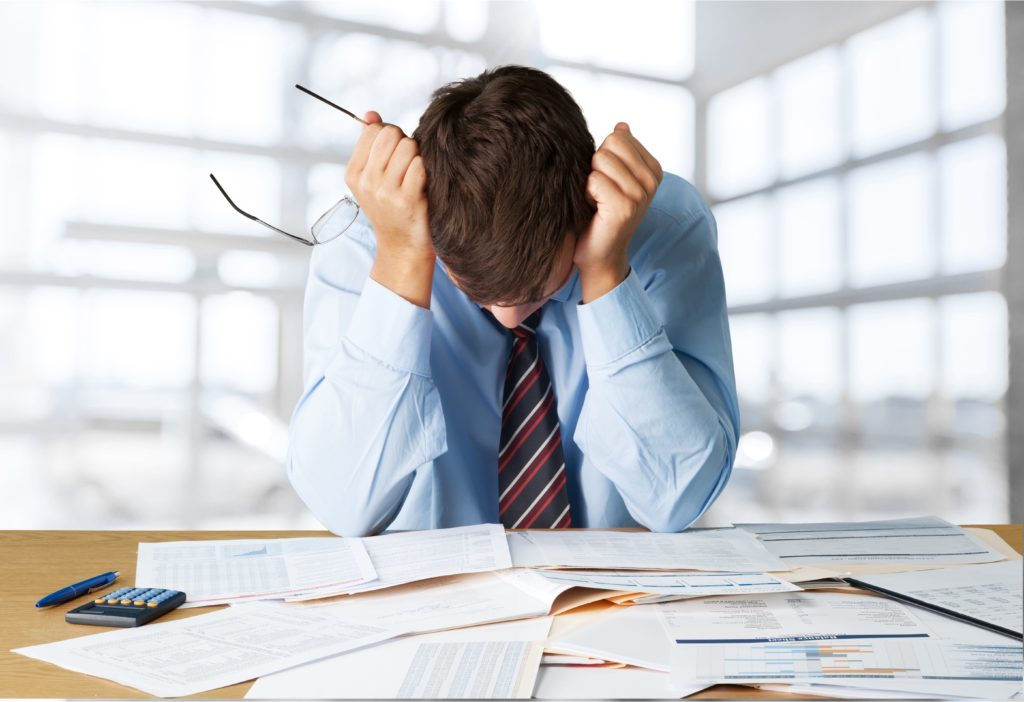
America’s families are feeling the effects of surging expenses and lagging incomes these days. Reports from the financial sector show the nation’s total household debt expanded beyond the $12.8 trillion mark last year with no slowdown in sight. Because of this, people are increasingly seeking solace from their overbearing financial burdens.
Numerous debt relief options are available to today’s consumers. From educational resources for more effective money management to in-depth strategies for reducing interest rates and overall balances, each solution is geared toward a different set of circumstances. One of the most commonly used solutions is bankruptcy. While it’s considered a last-resort alternative, it’s certainly proven to be a helpful tool for countless people.
Bankruptcy Defined
By definition, bankruptcy is “the state of being completely lacking in a particular quality or value.” When it comes to the world of finances, the absent element would be money. Legally speaking, bankruptcy is the process through which a person states he, she, or a business in his or her ownership is unable to meet current financial obligations.
Various types of bankruptcy can be filed, but not all are appropriate in every situation. Each one has its own distinct set of regulations, requirements, and outcomes. That being said, all revolve around the ultimate goal of providing a certain level of liberation from specific debts.
Types of Bankruptcy
National law officially recognizes five types of bankruptcy: Chapters 7, 9, 11, 12 and 13. Chapters 7 and 13 are the most frequently used forms, but all play their own roles in the economic realm. Which one might best apply to your needs depends on your unique situation.
Chapter 7
Designed for individuals, families, and businesses under some circumstances, Chapter 7 is also known as liquidation. This is the most commonly filed type of bankruptcy and has been described as the simplest and most straightforward one. After filing, some of your possessions may be sold to pay creditors a portion of what you owe; however, that’s not always the case. Many belongings, such as primary homes and vehicles needed to foster everyday life, can be exempted from liquidation.
Not everyone is eligible for Chapter 7 bankruptcy. In order to qualify, you must pass a means test. This assessment analyzes your financial circumstances to confirm your income falls below the statewide median level and that your debts amount to more than half your household income. Other aspects, such as family size and necessary expenses, are also factored into the equation.
Being deemed eligible for Chapter 7 means the court rules you don’t have enough disposable income to pay off your debts completely without facing undue hardships. Most of those financial commitments will be discharged, and you’ll be free to make a fresh start. In most cases, authorized debts are cleared in a matter of three or four months. If you don’t meet the prerequisites for Chapter 7, you’ll need to pursue other options.
Chapter 13
For those whose income exceeds Chapter 7 restrictions or who have the will and means to repay at least a portion of their debts, Chapter 13 bankruptcy may be in order. It’s more of a debt reorganization and payback strategy than a discharge plan. You won’t need to sell any of your property for liquidation purposes with this alternative, but you’ll most likely be required to pay your creditors amounts equal to the value of any non-essential assets.
Although income doesn’t affect eligibility for Chapter 13, the amount of debt you owe could have an impact on your ability to take advantage of this solution. In order to qualify, your current debts must fall within specific parameters. You’ll need to submit a plan for repaying creditors over the course of three to five years when applying for Chapter 13. Once this plan has been approved, you’ll be required to submit monthly payments to a third-party trustee who’ll be responsible for forwarding those funds to your creditors.
You’ll be legally bound by the agreements outlined in your repayment plan. Should you fail to meet those expectations, your case may be dismissed. If so, you’ll no longer be protected under Chapter 13 policies, and creditors may take further action in an attempt to collect what’s owed to them.
Chapter 11
Whereas Chapter 13 primarily covers individuals and families, Chapter 11 bankruptcy applies to businesses. Like Chapter 13, this is an opportunity for debt restructuring. It allows businesses to remain in operation while repaying their creditors.
When filing for Chapter 11, business proprietors are required to develop a plan for fulfilling their financial obligations. This proposal must be approved by the majority of the business’ creditors as well as the court in order to become legally binding and be put into play. Any debts not included in the company’s repayment plan may be discharged altogether.
Debt limitations are higher with this type of bankruptcy than with Chapter 13, which is the main reason it’s typically reserved for businesses as opposed to individuals. Unpaid financial obligations are categorized and prioritized based on their type in Chapter 11 debt reorganization agreements, such as employee wages, taxes, vendors, and loans. Failure to comply with the repayment proposal in question could have extensive legal repercussions.
Chapter 12
While virtually anyone in any occupation can apply for Chapters 7 and 13, Chapter 12 bankruptcy specifically encompasses family farmers and fisherpersons with steady income. This type of bankruptcy allows indebted individuals to create plans for reimbursing their creditors. If proposed repayment agreements are approved by debtors and the court, they’ll have between three and five years to see these plans through to fruition.
Filers are able to continue with business as usual on their farms or fishing grounds during the repayment period as long as they adhere to their established arrangements. Payments are made to outside trustees for the duration of the repayment phase and then passed along to creditors included in the Chapter 12 proceedings.
In order to be eligible for Chapter 12 bankruptcy, fisherpersons and farmers must be able to prove they gain at least half their income from their agricultural efforts and owe at least half their debts because of their farms or commercial fishing businesses. Debts must fall within predetermined minimum and maximum amounts.
Chapter 9
Chapter 9 is the least well-known form of bankruptcy and applies only to municipalities, such as cities, districts, or counties. In this type of arrangement, the municipality filing is expected to provide a plan for debt restructuring and repayment. As is the case with other debt reorganization arrangements, failure to adhere to such plans could result in serious ramifications.
Which Types of Debt Are Included in Bankruptcy?
Generally, unsecured debts are the ones most often discharged via bankruptcy agreements. Those are the obligations not backed by any form of collateral. Unsecured responsibilities include:
- Credit card debt
- Personal loans
- Payday loans
- Past-due utility bills, such as electricity, water, gas, internet, and phone services
- Medical bills
- Unpaid rent, property damages, and other judgments awarded to property owners and property management companies
- Deficiency judgments stemming from foreclosures and repossessions
- Store charge accounts
In some types of bankruptcy, court fees and other charges will also be forgiven. Debts falling into the dischargeable and unsecured categories are likewise included in bankruptcies involving payment restructuring. With Chapters 11, 12 and 13, certain secured debts are also given due attention. Secured obligations include mortgages and auto loans, as well as any other outlays for which collateral is specified. Discharge options don’t apply to some forms of debt regardless of chapter, such as:
- Child support
- Alimony and spousal support
- Debts incurred by way of fraud, such as exaggerating income or omitting outlays on credit applications
- Court-ordered fines and restitutions for illegal activities
- Judgments against you in civil court for personal injury or wrongful death
- Most student loans
In most cases, unpaid taxes aren’t completely cleared via bankruptcy either. They can potentially be reduced under reorganization proposals, though. Certain exceptions do apply here. Income taxes more than three years in arrears for which you filed a legitimate return may be eligible for dismissal.
It’s only fair to point out that creditors included in a discharge judgment or restructuring plan can argue their cases in court in an attempt to be granted full payment for the amount you owe them. Proving they should receive complete reimbursement is a complicated feat, but it’s not impossible. In the event they’re able to sway the judge in their favor, you’ll remain responsible for your financial commitment to them.
Potential Benefits of Bankruptcy
By nature, bankruptcy can provide a way out from under crushing debt. Offering a release from financial strain and emotional stress could be considered the most significant benefit of this debt relief option, but it’s not the only one.
Protection Against Creditors
If you’ve reached the point where you’re contemplating bankruptcy, you’re probably well aware of just how relentless creditors can be in their efforts to collect. Filing bankruptcy grants you an automatic stay, bringing an end to:
- Harassing phone calls
- Threatening letters
- Lawsuits
- Repossession and foreclosure efforts
- Wage garnishments
An automatic stay may also safeguard you against having essential utilities disconnected. It can provide a temporary reprieve from eviction as well.
Creates a Clean Slate
Once you’ve filed for Chapter 7 bankruptcy and been approved, you have a chance to start all over again. After successfully completing repayment plans with other forms of bankruptcy, the same is true. Though rebuilding your credit will take time and effort, plenty can be said for the value of getting a second chance.
Life Allowances
Whether you’re looking at liquidation or reorganization, the courts do consider your needs. You’ll be allowed to keep enough income to cover necessities, such as shelter, food, utilities, and transportation. Though you may be required to give up luxuries, such as boats, campers, motorcycles, and vacation homes, you’ll be allowed to hold on to your primary residence and vehicle even in the case of Chapter 7.
Business as Usual
For companies hoping to remain in business, equipment needed to maintain daily operations will likely be exempt from repayment stipulations. While it may be necessary to provide reimbursement to creditors equal to the value of those assets, you won’t be required to give them up and close your doors.
Versatility
With the variety of bankruptcy options available, the odds are certainly in your favor. Though you may not qualify for the type you’re aiming for because of income or debt restrictions, chances are good that you’ll be eligible for at least one of them.
These are a few of the general advantages of filing bankruptcy. Empowerment that comes from knowing you’ve taken action to improve your circumstances definitely holds plenty of value in its own right, as well. No two cases are the same, so certain other bonus aspects may apply to your situation.
Bankruptcy’s Downsides
As is the case with virtually everything in life, not all results of filing bankruptcy are positive. It does have its fair share of drawbacks.
Credit Impact
Bankruptcy will have a negative effect on your credit score and future borrowing ability. This option remains on your credit report for 7-10 years, and its influence could linger on even after coming off your record.
Credit Card Loss
Once you file for bankruptcy, your creditors are notified. Credit card issuers tend to cancel charging privileges for cardholders seeking bankruptcy or other forms of debt relief. You probably won’t be able to open new accounts during your repayment period either.
It’s Not All-inclusive
As mentioned, not all debts can be discharged or restructured via bankruptcy. At the same time, creditors have the right to oppose your plans or seek immunity from them. While a number of your debts will go away after filing, some of them will continue to haunt you.
Possible Reversals
Automatic stays can go a long way toward generating a little extra wiggle room to make provisions for the future, but they’re not permanent. In most cases, they only last a few days or weeks. Furthermore, you may only be protected from further collection efforts for a short time. Creditors can request their restrictions be lifted for various reasons. Laws are on your side when it comes to creditor harassment, though. They have to build a solid case in order to be allowed to proceed outside the boundaries of your bankruptcy agreement.
Additional Fees May Apply
Though bankruptcy is geared toward people facing financial hardships, it’s not free by any means. Standard fees for filing on your own start at just over $300 and only go up from there. If you enlist the services of an attorney, which is typically recommended, you’re looking at anywhere from $1,500 to $4,000 or more. You’ll probably be required to participate in credit counseling and financial management classes, each of which tends to come with its own set of prices. Court costs also come into play.
Aside from these disadvantages, state and federal tax refunds may be revoked after declaring bankruptcy. This option undoubtedly has some shortcomings, but when faced with overbearing debt, the positives often outweigh the negatives. Many of these drawbacks are comparable to those of other debt relief options and much less severe than the consequences of taking no action at all.
The Emotional Toll of Bankruptcy
Most people who file for bankruptcy go into the process with at least some idea of the effects to follow. Unfortunately, many of the repercussions span well beyond not having credit cards at your disposal and dealing with any debts not covered under legal provisions. Countless filers experience a wide range of unexpected mental and emotional effects as well.
In a world that seemingly revolves around possessions and financial standings, losing either of these elements could easily leave someone feeling lost, ashamed, angry, and sad, to name a few sentiments possibly entering the mix. Seeing themselves as failures is also a common reaction among those filing for bankruptcy.
Some ultimately face broken friendships and marriages because of the emotional impact of these feelings. Lifestyle changes – coming from liquidating personal belongings or having to buckle down and live by a strict budget – only serve to heighten the possible aftermath. Forging ahead into an uncertain future can certainly generate considerable fear as well. In turn, those feelings and experiences often lead to anxiety, depression, and a number of other issues.
Many might argue the same problems could ensue because of the financial struggles leading up to bankruptcy, though. It’s important to acknowledge negative feelings as they arise rather than trying to suppress them. Talking to a friend, partner, or counselor about those problems can help ease their influence.
Grief, resentment, panic, doubt, and other unpleasant states of mind are common for those who choose the bankruptcy route. Powering through these emotions and avoiding deeper repercussions may not be simple, but it can be done. Doing so may require looking at the matter from a different perspective.
Seeing the bright side may seem like a far-fetched idea in the face of any type of adversity. Still, it has worked for countless people and will, in all likelihood, help you deal with the potential emotional toll. Remind yourself this is an opportunity for a fresh financial start. Rather than placing blame on yourself and giving in to hopelessness, think of it as a monumental step toward building a new life filled with unprecedented opportunities. Reaching out for help is a sign of strength rather than an admission of failure.
Is Bankruptcy a Good Option for Me?
Bankruptcy is a life-altering venture, and the decision to pursue this solution shouldn’t be made lightly. Most experts agree it should be a last-ditch effort to be used only when all other options have been exhausted. That being said, whether it’s the right choice depends on your unique circumstances at this point in your life.
First off, deciding if bankruptcy suits your needs entails examining your financial situation. Is there any chance things could turn around for you? Are you up for a promotion or a job transition? Are your current financial difficulties the result of a short-term illness or injury? If the answer to any of these questions is yes, filing bankruptcy could be unnecessarily jumping the gun.
From there, look at the types of debt you have. Remember, only unsecured debts can be discharged courtesy of bankruptcy. If the majority of your obligations are backed by collateral, you may not profit much by filing. In the event your hardships stem from child support, alimony, restitution, or tax debt, bankruptcy probably won’t help your situation.
Additionally, think of others who may be affected by your decision to file bankruptcy. If someone cosigned with you on one of your debts, it won’t be discharged; instead, your cosigner will ultimately be held responsible for the remaining balance. This could cause undue hardships for the person who tried to help you.
Don’t forget to think of yourself before proceeding. Do you fully understand the lifestyle and spending changes to follow? Are you prepared for the potential mental and emotional repercussions? Are you willing and able to adhere to a debt repayment plan?
If you’re a business owner whose revenue is falling severely short of financial commitments, Chapter 7, 11 or 13 may very well be the way to go. Remember, though, that certain factors will affect your eligibility. Individuals and families who’ve tried other options to no avail and truly can’t afford to cover their obligations could benefit from Chapter 7. Qualifying for this type of bankruptcy does depend on whether you’re able to pass the means test. Those whose incomes fall outside the prerequisites may be able to take advantage of Chapter 13 as long as their debts don’t exceed the standard criteria.
If you happen to be a commercial farmer or fisherperson, Chapter 7, 11, 12, or 13 could be at your disposal. Though you may potentially be able to qualify for any, Chapter 12 offers industry-specific benefits not available with the other forms of bankruptcy. As is the case with all types of bankruptcy, certain eligibility requirements apply.
Look at all the aspects involved before you decide to file. Be sure it’s a necessary move, and make certain the consequences are worth the possible rewards. If you believe it’s the best choice, analyze your finances and debts to decide which type of bankruptcy to pursue. In the event you’re not eligible for your first-choice option, others are available, but converting from one form to another comes with additional costs.
Do I Have Other Options?
For most people, the answer to this question is yes. Again, it all depends on your unique circumstances. Numerous debt relief solutions are out there, but they may not fit your needs.
Credit Counseling
Through credit counseling, you’ll receive professional guidance in better managing your finances and revamping your spending habits. You’ll also gain access to a wide range of tools and resources designed to assist you in these efforts. Credit counseling is often a requirement for those filing bankruptcy, but it could also help keep you from having to resort to such extreme measures. If you need to take matters further, your financial expert will be there to explain any other possibilities available to you and aid in developing an effective debt management plan.
Debt Settlement
When filing bankruptcy, some of your debts are discharged and others may be reorganized or reduced. Debt settlement works in much the same way. With this option, a debt management specialist will contact creditors on your behalf and try to convince them to lower your interest rates or agree to accept less than what you actually owe. Professional intervention like this could work in your favor without ever having to take the matter before a judge. Not all creditors will agree to a debt settlement plan, but then, not all of them will settle for losing out at the hands of bankruptcy either. Remember, they can fight the system even if a judge approves your debt reorganization proposal.
Consolidation
Consolidation means rolling several monthly payments into a single one. This can be done in a number of ways, such as taking out a debt consolidation or home equity loan, requesting a home equity line of credit or finding a credit card with low or no balance transfer fees and reasonable interest rates. Granted, if you’re experiencing financial difficulties and have already fallen behind on some of your obligations, you may not be eligible for a loan or credit card with better interest rates than you’re paying now. In the event your mortgage payments are in arrears, you may not qualify for a home equity loan, and HELOCs are risky alternatives. Still, if you haven’t fully descended into a state of inescapable hardship, this solution may be worth looking into.
Negotiation
For many, unmanageably high interest rates are the main culprits of financial difficulties. Calling high-interest debtors and explaining your struggles could spark positive results. Credit card companies have secretive but readily available programs for just such situations; you simply have to call them and forge your way through the chain of command to a representative from their hardship departments. Some other lenders may offer the same benefits. It never hurts to ask, and the worst they can do over the phone is tell you no.
After engaging in credit counseling, having a debt settlement plan put into play or negotiating with creditors for lower interest rates, a number of people find their debts aren’t quite as out of hand as they originally believed. Many find they don’t need to file bankruptcy after all. If you haven’t already gone through these channels, consider trying them before going to the extreme. Be sure to reevaluate your debt afterward. You may be in for a pleasant surprise.
What to Expect During the Bankruptcy Process
If bankruptcy truly is your only viable course of action, knowing what to expect can help alleviate some of the anxiety involved and better prepare you for the experience. First off, you’ll need to have a bankruptcy petition drawn up by an attorney or other expert in this type of proceeding. This documents your current situation, including the debts you want covered by bankruptcy, the type you wish to file, your income, and other vital details.
Once you’ve completed the petition, you’ll need to file it with the court. From there, your automatic stay will go into effect. Creditors, collection agencies, and others breathing down your neck will be notified of your newfound protection by the court.
A creditors’ meeting will then be scheduled. This gathering typically takes place within a month or two of the filing date. You’ll sit down with your creditors and the trustee in charge of your case to discuss your debts and any repayment plan to be submitted. In most instances, creditors don’t bother to show up for the meeting, but some do make their appearances.
Creditors are given a specified amount of time to dispute your debt restructuring or discharge plans. If any speak up, a resolution could be delayed. In the meantime, you’ll begin credit-counseling classes. You’re required to sign up for this service within six months of your filing date. Once all applicable debts have been forgiven or your repayment plans completed, you’ll receive a notice of discharge. This can take anywhere from a few months to five years depending on the type of bankruptcy you choose.
All Things Considered
Bankruptcy has freed millions of people from devastating debt and creditors’ attempts at intimidation. Several different types of bankruptcy have been developed, each one catering to a different set of circumstances. Though this is an effective debt relief option, it’s typically a last resort and isn’t necessary in all situations.
Despite its many benefits, bankruptcy does present a few stumbling blocks. Not all debts are covered under its protective umbrella, and negative credit implications and emotional issues could arise in its aftermath.
Weigh your circumstances and options carefully to determine if bankruptcy is actually the right move for you. Other solutions could prove more beneficial in the long run, but if no other alternatives are on the table, bankruptcy may well be the smoothest path to a new beginning.





